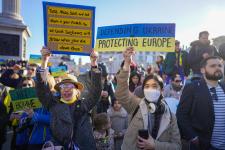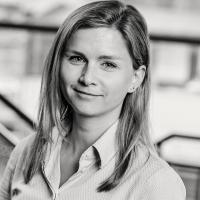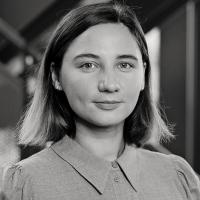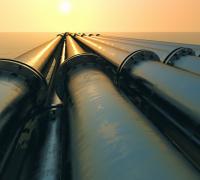Ukraine is closer than you think

23rd of February marks the “Defender of the Motherland Day” in Russia, devoted to soldiers, patriotism, and masculinity. The day after, on the 24th of February, Vladimir Putin dispatched troops on a “peace-keeping mission” to Ukraine - “a failed state and a Western puppet”. Meanwhile, Putin named the West as the enemy, posing a “direct threat to Russia’s national security” should NATO expand into Ukraine.
To observers of Russian foreign policy, this narrative is not new. In fact, as early as 1994, at the first post-USSR international forum on NATO enlargement to the East with representatives from the West and the former Eastern-Bloc Vladimir Putin spoke of Crimea as a temporarily tolerated territory of Ukraine. At the time, as an advisor on international affairs to St. Petersburg Mayor’s office, Putin stated that 25 million Russians were forced to live as second-class citizens as a consequence of the Union’s collapse, adding that Russia only agreed to tolerate these developments due to diplomatic reasons.
Putin’s views have only radicalized during the three decades that followed, especially concerning Ukraine. Inspired by the Russian philosopher Ivan Ilyin as well as the Russian General Anton Denikin, and their shared lack of belief in the basis for an independent Ukrainian state, Vladimir Putin on several occasions expressed the opinion that “Ukraine is ancient Russian soil”, and that “Russians and Ukrainians were one people – a single whole”. He reiterated his stance in an essay published in 2021 “On the Historical Unity of Russians and Ukrainians”. In this piece, Putin argued that Ukraine never truly had statehood and the Ukrainian nation itself was manufactured by Lenin by carving people out of Russia, thereby artificially dividing one nation.
In this light, the war in Ukraine is a reflection going beyond the regional balance of power. For the Russian side, the unification of the “Russkiy Mir” (Russian world) and bringing Ukraine back to Russia marks the completion of Putin’s higher political mission and legacy. For the Ukrainian side, the mass Russian military invasion is a culmination of a long struggle for national self-determination. In this struggle, the harder Ukraine tries to pull away from Russia, the harder is the backlash from Kremlin. While the Russian iron grip on the region might prove hard to challenge, many ties between the two countries were already fragile in the build-up to the war - as Ukraine has strived for years to be closer to Europe, by right and by choice.
Ukraine and Russia: the contested past
The history of Ukraine is marked by a complex struggle for independence from Russia. In this centuries-long process, Ukrainians not only faced the challenge of establishing independent statehood, but also a deeper sense of national distinctiveness from their Russian neighbour. The Ukrainian identity has been formed in opposition to Russia, seeking to distil the difference and establish what lies at the core of being Ukrainian.
Over the years Ukraine and Russia contested territory, history, and cultural heritage, by asserting that specific myths, symbols, or ancestry are part of their distinctive national pasts. The Ukrainian identity debates, which originated in the Tsarist times, contributed to Ukraine’s brief independence in 1917-1919 and later led to the pro-independence movement in the 1980s. The former Tsarist and Soviet historiography never fully acknowledged the existence of a separate Ukrainian ethnic group. Moreover, most ethnic Russians following the collapse of the USSR did not perceive Ukrainians and Belarussians as “foreign” people but rather as regional branches of the all-Russian (i.e., east Slavic) ethnocultural group. Ukraine’s post-Soviet narrative started to challenge that, and the Ukrainophile School of historiography dominated the country’s newly reformed educational system. Myths and symbols became crucial to the creation of a new Ukrainian national identity - different from both the Russian and the former Soviet one.
Most importantly, through the claims to territory, culture, language, and political ties Ukrainian narrative reclaimed Kyiv Rus as a proto-Ukrainian state. Seeing it as the “cradle” of Ukraine served to re-establish Ukraine as a European state rather than a part of Eurasia, while Russia was perceived as lying outside of Europe. In this historical perspective, Ukrainians were seen as more ancient people than Russians, while the Russian language was perceived as foreign and forcibly imposed. The Ukrainian history textbooks started depicting Russia in a more negative light, as they increasingly blamed the Russian ethnic group for the crimes of Communism, Stalinism, and totalitarianism. As the Ukrainian expert on Ukraine Taras Kuzio noted in his analysis from 2001: “The Ukrainian independent state is mythologizing itself as the culmination of a 1000-year desire to exist that was thwarted by the ‘Other’.”
Between the East and the West
Politically, Ukraine took advantage of the unique momentum after the collapse of the Soviet Union to finally gain more autonomy and opted for a less obliging membership in the Commonwealth of Independent States. Since the 1990s the Ukrainian elites tried to steer the nation-building process away from major controversies while maintaining a necessary degree of antagonism with Russia. Although the ruling elite supported the myth of national liberation, it adopted the view that Ukraine is a common home for all its citizens. The Ukrainian Declaration of Sovereignty from July 16, 1990, included a section on “citizenship” grounded in a civic idea that somehow prioritized the state over the nation, especially defined in ethnocultural terms. This inclusive approach was central to preventing the alienation of Ukraine’s multi-ethnic and bilingual population with close links to Russia. Nevertheless, domestic political forces and the cultural intelligentsia advocated the “national idea” and sought to ground the national identity in the Ukrainian language and culture and reverse the effects of Russification.
While Ukraine’s first president Leonid Kravchuk favoured the view of Russia as an ethno-territorial “Other”, over time the centrist political forces in Ukraine opted for a more Russia-friendly approach and counterbalanced the nationalistic tendencies. This led to Ukraine’s multivector foreign policy that for many years aimed at a strategic partnership with both western and eastern countries including the EU, the US, and Russia, downplaying the negative image of the latter. However, the growing drive towards the West – especially among the younger generation of Ukrainians – over the years altered this balance. The mass protests of the Orange Revolution in 2004-2005 helped to elect pro-Western President Viktor Yushchenko in a repeat run-off election against Viktor Yanukovych amid the claims of corruption, voter intimidation, and electoral fraud.
The Orange Revolution in Kyiv presented the world with a “genuinely different Ukraine (…) a noble European nation, one that embraces democratic values”, highlighting the yearn for political change, oriented at countering Russia’s influence. Although the revolution generated an expectation that the changes would pave the path to both European and international institutions, the EU did not embrace Ukraine as a candidate. The “Orange Coalition” disintegrated by 2006, triggering a constitutional crisis in early 2007. The democratic progress was slow and elusive in the years that followed, and the EU remained ambiguous in its position towards Ukraine.
Fast-forward to 2010 Viktor Yanukovych was elected president of Ukraine. The election coincided with Putin’s ambitions to return to the presidential office in 2011, which led to mass protests in Russia and triggered even more governmental propaganda appealing to emotive Russian nationalism. As a consequence of this political environment, and under severe pressure from Moscow, Yanukovych decided not to sign a wide-ranging association agreement with the EU in Autumn 2013. This sparked mass demonstrations throughout the entire country, including Eastern Ukraine which has a vast Russian-speaking minority. The crisis escalated with Yanukovych fleeing to Russia and Russia invading Ukrainian territories in 2014.
The annexation of the Crimea and occupation of the eastern territories by Russian forces challenged the territorial integrity of Ukraine and put a definite end to Ukraine’s multivector policy. Here, it is important to stress that the military confrontation in Crimea was not addressed as a civil war, but a war caused by an external aggressor, much like today. Ever since the 2014 conflict, the societal anxiety over Ukraine’s future and a new Russian invasion has increased. In 2020, 93% of Ukrainians feared military aggression from another country. The Russian military invasion in February 2022 confirmed those fears. However, this time the war led to a “tectonic shift” in the Western policy approach to Russia and much tighter sanction measures.
What does it mean to be Ukrainian?
The recent conflicts with Russia have forced Ukraine’s multi-ethnic and multi-linguistic population to confront its national self-identification. Studies conducted in the last few years show that the latter proved more complex than Moscow would have hoped. Russia in particular has used the argument of the large Russian-speaking minority in Ukraine to undermine Ukrainian sovereignty.
Yet, the attitude to the Ukrainian language has significantly changed since the 2014 conflict, with more Ukrainians, and even more Russians (living in Ukraine), claiming Ukrainian as their native language. Scholars have noted that native language has become a representative measure of ethnonational identity in Ukraine, as it is not the language people speak that matters, but rather their attitude to the Ukrainian language. Moreover, the identification with the Ukrainian language has increased loyalty to the Ukrainian state, while Russian identity has proved less solid. Consequently, the “Ukrainian vs. Russian” self-identification has rapidly increased after 2014. In 2011 83% of the population identified as Ukrainian regardless of whether they spoke Ukrainian or Russian. By 2017 a mere 2.5% of the population identified as “only Russian”. Polls from 2020 further revealed that 95% of Ukraine’s population associated themselves with Ukrainian ethnic identity, even surpassing Russia itself, where 87% of the population declare that they “feel Russian”. The adoption of the language law in Ukraine in 2019 additionally enforced the use of Ukrainian in public life, ultimately strengthening its role in the process of identity building. Adding to this, Ukrainian self-identification has also been increasingly expressed in the last years by other markers, such as individuals’ greater pride in being a citizen of the Ukrainian state, stronger attachment to symbols and attributes of nationhood (e.g., national anthem, flag, independence, language), enhanced solidarity with compatriots, and increased readiness to defend or work for Ukraine.
Ukraine and Russia: ties hard to break?
While the increasing self-identification as Ukrainian by the country’s bilingual population is a clear sign of a withering relationship with Russia, the ties between the two states have been in overall decline for many years – in the cultural as well as the economic domains.
An unprecedented example of cutting ties with Russia is the recent historic split of Ukraine’s new Orthodox Church from the Moscow Patriarchate. Although Ukraine has sought to diminish Moscow’s influence over Ukrainian worshippers ever since the 1990s, it was the outbreak of the war in 2014 that increased the tensions, as Kyiv accused Moscow-backed churches in Ukraine of spreading propaganda and supporting the fighters in the eastern conflict zones. Noteworthy, on the contrary, the Ukrainian orthodox churches in Kyiv provided support e.g., in the form of shelter to protesters during the conflict once mass protests turned into violent clashes with the police. The then Ukrainian President Petro Poroshenko stated at the time that the Ukrainian national security and statehood depended also on “spiritual independence” from its eastern neighbour. Consequently, obtaining a decree of autocephaly (the “tomos”) from the Patriarch of Constantinople in January 2019 marked the greatest Orthodox split since the schism with Catholicism in 1054 and ended Moscow patriarchate’s centuries-long jurisdiction over the Ukrainian church (since 1686).
Ukraine’s struggle for independence has also strongly played out in its energy sector. The discounted price for Russian gas kept the Ukrainian political elite and the general population in a strings-attached state of privilege following the collapse of the Soviet Union. Despite some minor disputes in the early 1990s connected to the Ukrainian payments for the purchased gas volumes, the issue of overdependency on Russian gas was not dealt with in terms of any concrete policy proposals until the mid-2000s. The cooling of the Kyiv-Moscow political relations following the Orange Revolution and the subsequent 2006 gas crisis changed the political and economic context. A dispute between Ukrainian oil and gas company Naftogaz and Russian gas supplier Gazprom, in which Russia accused Ukraine of diverting gas that was intended to be exported to the EU from the transit pipelines for domestic use, resulted in a temporary cut-off of gas supplies by Gazprom. The then Ukrainian President Viktor Yushchenko stated at the beginning of January 2006 that the “gas war” with Russia was “a real war for the independence of Ukraine”. As such, the gas conflicts with Russia became yet another area of the ongoing struggle for national self-determination driven by the vision of energy independence.
The diversification of the domestic energy portfolio dominated Ukrainian energy policy in the following years and led to plans for further development of nuclear energy and exploration of the domestic ores of uranium and coal, improved energy efficiency measures, proposals for the construction of LNG terminal, extraction of shale gas, reversed gas flow from the West as well as greater investments in wind and solar energy. Many of these plans only truly took off following the outbreak of the military conflict with Russia in 2014, which caused the loss of the coal-rich eastern territories and the Crimea where big solar power plants were located. While the current war will cause additional damage to Ukraine’s energy infrastructure that is yet hard to estimate, the energy sector will remain key in any potential Ukrainian attempts at economic and political independence from Moscow.
Ukraine: how close to Europe?
Vladimir Putin’s domestic approval ratings momentarily skyrocketed to 89% after the annexation of Crimea in 2014, however the Ukrainian support for President Volodymyr Zelensky surpassed that rate as a result of his defiant stance in the face of a Russian invasion. In his speech on February 24th Zelensky stated: “When you will be attacking us, you will see our faces, not our backs”, resembling echoes from the national anthem: “We will not spare either our souls or bodies to get freedom.”
The political cost of Ukraine’s drive towards the West has now reached a tipping point and once again stressed the dichotomy between the West and the East, Ukraine and Russia, democracy, and dictatorship. While Ukrainians are fighting for Ukraine’s territorial integrity, the EU’s stance also plays a key role in shaping the country’s future, as both its actions and inactions will have major consequences. Following the invasion, Ursula von der Leyen emphasized that Ukraine belongs in the EU. Geographically, Ukraine has always been a part of Europe, but it also strives to belong to its democratic political community. The NATO Secretary-general Jens Stoltenberg noted that: “There will be a new reality, it will be a New Europe after the invasion we saw today”, thereby marking a fundamental shift in the perception of Ukraine in the West. But no matter what happens next, Ukraine is closer than you think.
This DIIS comment is partially based on an article published in 2021 in the Journal of International Relations and Development
DIIS Eksperter


